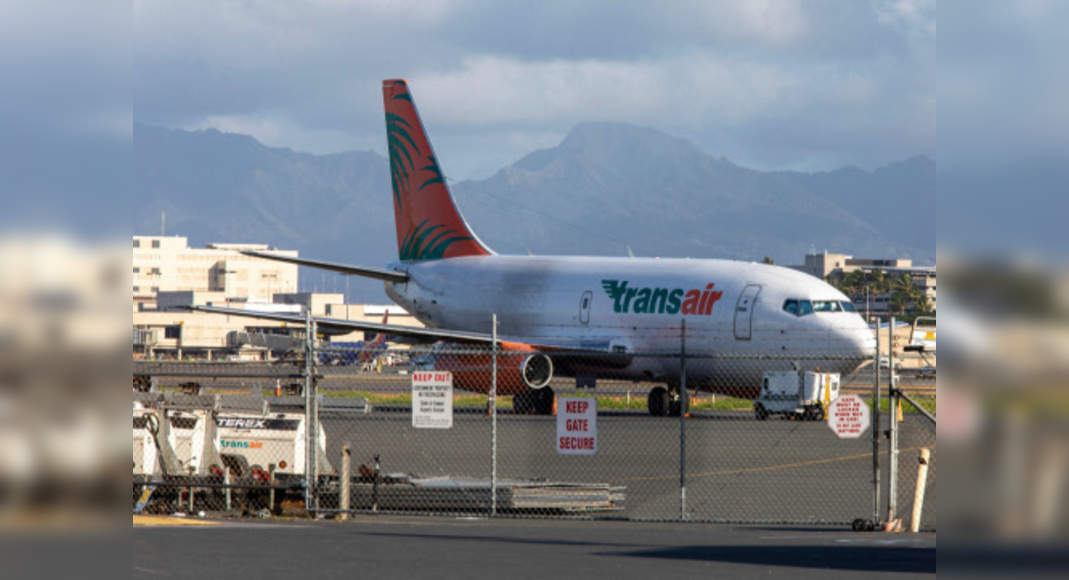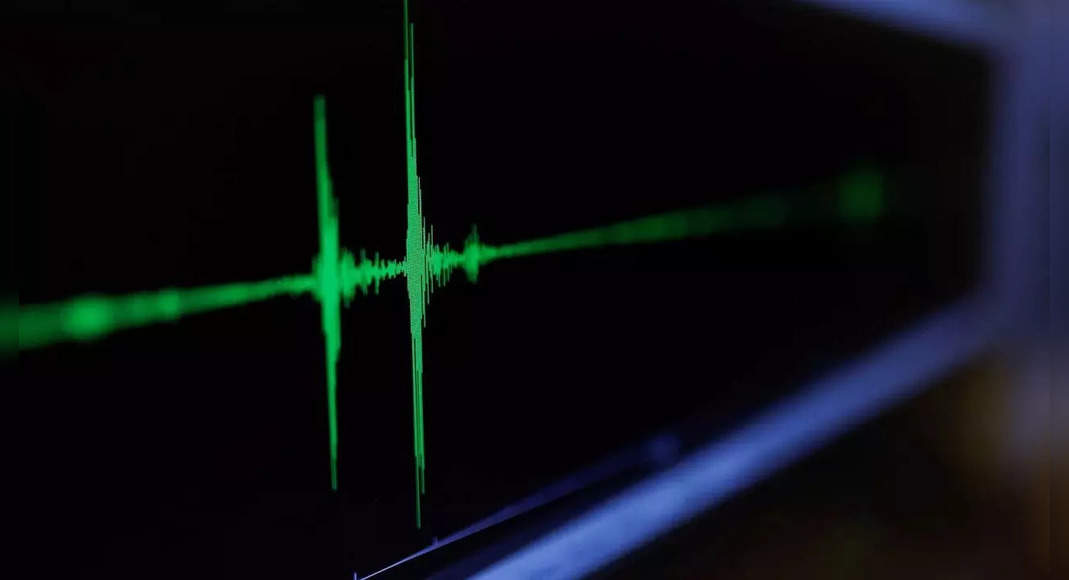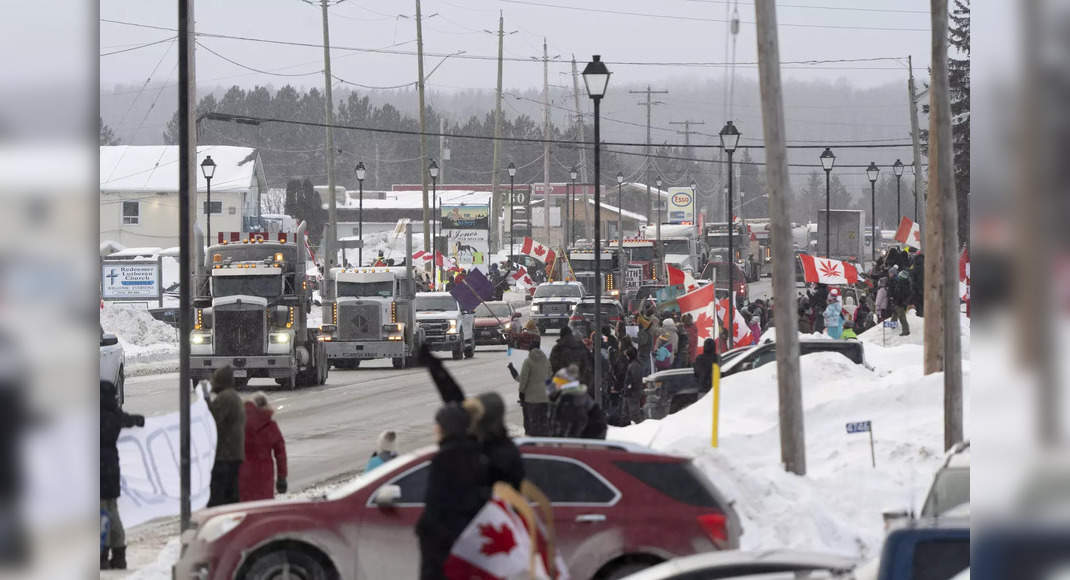HONOLULU: The trouble started minutes after a Boeing Co 737 freighter lifted off from Honolulu for a nighttime cargo run to the nearby island of Maui.
As the 46-year-old jet climbed at the start of the planned 24-minute trip Friday, one of its engines cut out.
The relatively routine failure turned tense as Transair Flight 810 began to lose altitude while its flight crew attempted to return for a landing, according to a recording of air-traffic radio calls posted by LiveATC.net.
“We’re gonna lose the other engine too.
It’s running very hot,” a pilot radioed.
“We’re low on the speed.
It doesn’t look good.” A controller at Daniel K Inouye International Airport then told the crew the airport fire department had been alerted.
“You need to let the Coast Guard know,” the pilot replied.
Minutes later, the controller said, “It looks like they went down in the water.” That triggered a dramatic rescue off the coast of Oahu, as two pilots who may have experienced a rare dual engine failure struggled to survive.
The US Coast Guard located the 737 in a debris field at about 2:30am — roughly 50 minutes after the initial alert.
“We first saw a man waving, waving his hand from the tail of the airplane,” said Lieutenant Gleb Borovok, a Coast Guard crewman on the MH-65 Dolphin helicopter that arrived on scene, in an interview with Hawaii News Now.
“Next we saw another man floating on a bed of cargo.” The rescuers initially focused on the pilot clinging to the packages, said Borovok and Lieutenant Alex Mead, who flew the chopper.
But then the tail of the aircraft started to sink, thrusting the man who had been perched there into the water.
The helicopter deployed a swimmer and hoisted the Transair pilot aboard.
The Transair aviator on the packages was picked up by a Honolulu Fire Department rescue boat amid seas of as high as five feet (1.52 meters) and winds of 17 miles per hour (27 kilometers per hour).
Both aviators were injured and rushed to Honolulu’s Queen’s Medical Center.
One of them, who is 58, was in intensive care in critical condition, according to Hawaii News Now.
The other, 50, was in serious condition with a “head injury and multiple lacerations,” the news outlet said.
The ill-fated Boeing 737-200 began its commercial life in 1975 hauling passengers for Pacific Western Airlines, predating by decades the new Max passenger model that was grounded for 20 months after two fatal crashes.
The emergency water landing off Hawaii marks the second time this year that an older 737 jet has been destroyed.
In January, a Sriwijaya Air passenger flight crashed off the coast of Indonesia, killing all 62 people aboard the 737-500.
The US National Transportation Safety Board said it was sending a team of 10 investigators to the accident site in Hawaii.
Transair said it was working with federal authorities to investigate the cause, while its “most immediate concern is the care and recovery of our colleagues.” Boeing said it was in contact with safety officials as did Pratt & Whitney, a division of Raytheon Technologies Corp, which supplied the JT8D engines used by the 737-200.
Boeing fell 1.3% to $236.68 at the close in New York.
Raytheon climbed less than 1% to $86.70.
‘Are you able to climb?’Flight 810, branded as Transair and operated by Rhoades Aviation Inc, took off for Kahului a little after 1:30am local time and climbed to around 2,100 feet (640 meters), according to a track posted by Flightradar24.com.
The aircraft made a right turn over the ocean and circled back toward the airport, ditching in the water about 11 minutes later.
The track provided by FlightRadar24 doesn’t show the normally smooth altitude and speeds of a typical flight, suggesting the pilots may have been struggling to control the plane.
In the air-traffic recording, the controller initially tells the aircraft to “maintain 2,000 if that’s the altitude you like” and asks for more details about their emergency.
A pilot responded that “all that is good” and said he would provide the information in “a little bit.” But the situation quickly deteriorated during the short time they were aloft.
Apparently responding to an alert in the tower that the flight was too low, the controller asked, “Are you able to climb at all?” “No, negative,” the pilot responded.
After initially advising the plane to return to Honolulu, telling them they were “cleared to land any runway,” the controller told them Kalaeloa Airport was closer.
“We’d like the closest airport runway please,” one of the pilots responded.
Two calls from air traffic control to the crew then apparently went unanswered.
Sully flightEngine failures that lead to the loss of a jet are extremely rare.
The 737, like all twin-engine aircraft, is designed to fly on a single turbofan if the other malfunctions, and maintenance programs are designed to ensure that the same issue doesn’t occur on both engines at the same time.
While it’s not clear what happened with the Transair plane, if the plane lost both power plants, the potential causes could range from maintenance error to fuel problems or a miscue in how the pilots responded to the initial emergency.
The reason the second engine may have overheated wasn’t clear.
Flying on one engine shouldn’t cause undue strain on the functioning power plant, said Jeffrey Guzzetti, former chief of accident investigations at the FAA.
Because dual engine failures are so unlikely, investigators will want to look for some kind of common issue that could have played a role in each, Guzzetti said.
Jets are designed to be able to ditch in water and float for a period of time, according to federal regulations.
In 2009, a US Airways jet plowed into a flock of birds in New York and lost power in both engines — the plane that pilot Chesley “Sully” Sullenberger famously landed on the Hudson River.
Pratt has produced more than 14,000 of its JT8D engines since the turbine entered service on the Boeing 727 in 1964, according to the engine maker’s website.
About 2,400 are still in use.
Transair began operations in 1982 and says it provides the longest-running all-cargo service in Hawaii.
It specializes in inter-island transport between all major Hawaiian destinations, according to its website.







